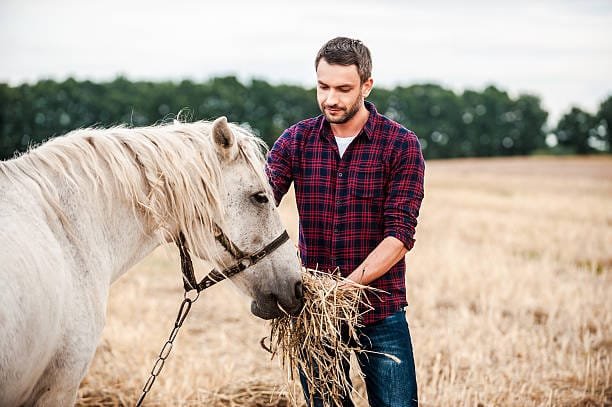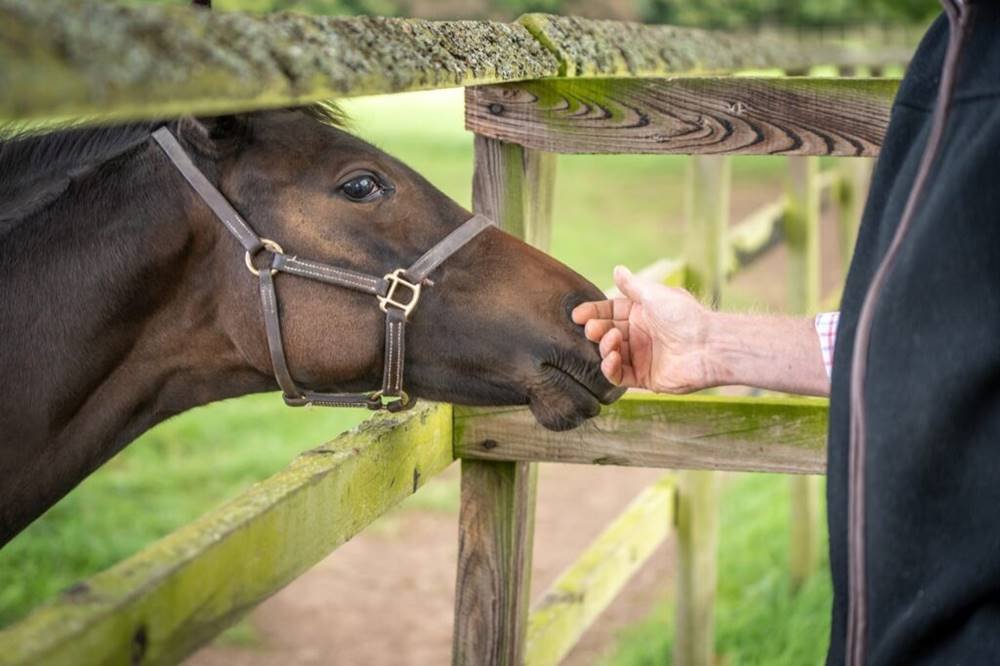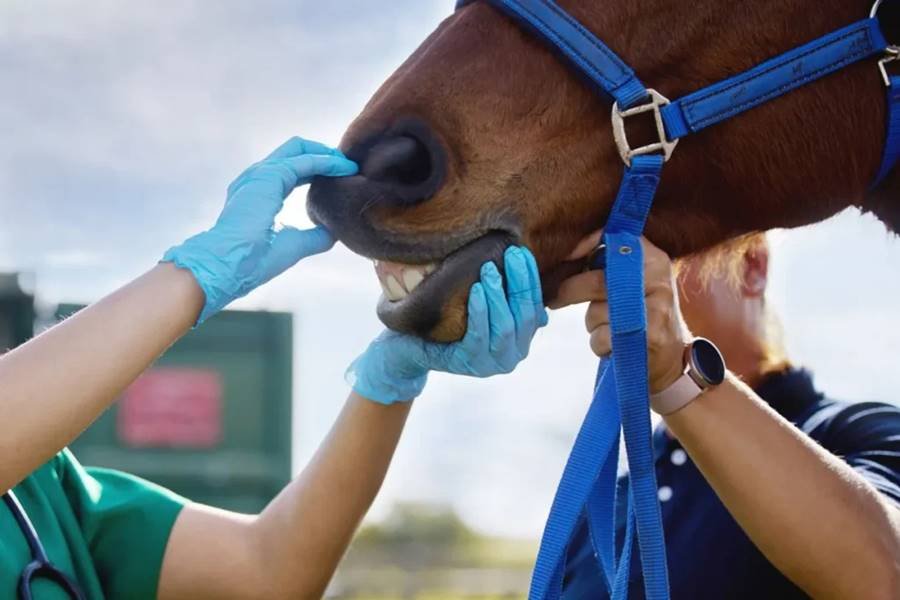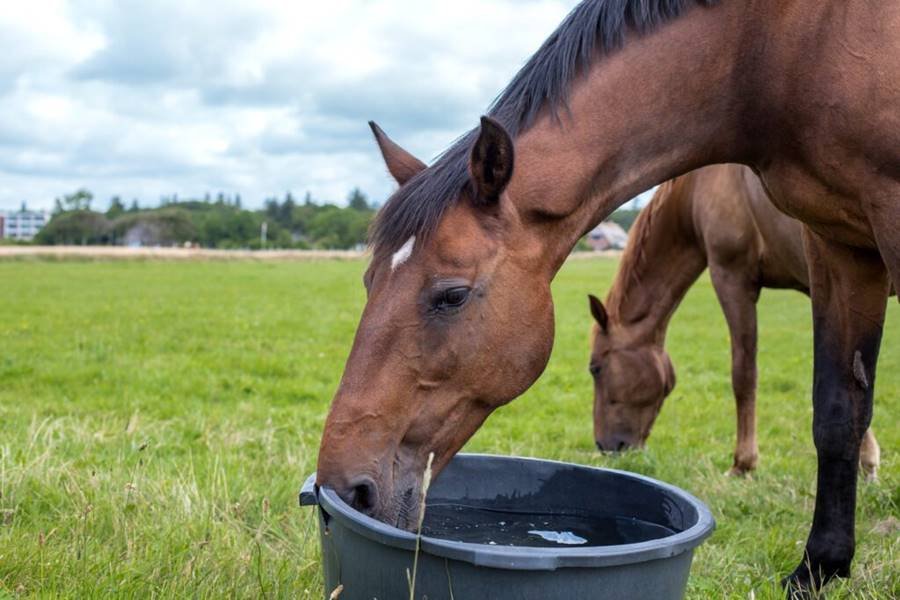Feeding horses by hand is a rewarding and special way to bond with these majestic animals.
It provides a moment of trust and companionship. However, while this can be a great experience, it’s important to understand the proper way to feed horses to ensure their safety and well-being.
Here’s a complete guide on how, when, why, and what to feed a horse by hand:
1. Why Feed a Horse by Hand?
Feeding a horse by hand can have several benefits for both the horse and the handler. Here are a few reasons why you might consider feeding a horse by hand:
- Building Trust and Bonding: Horses are naturally prey animals, and they are cautious by nature. By feeding a horse by hand, you can build trust, which is crucial for developing a positive relationship. When done correctly, hand-feeding can create a sense of security for the horse and increase its comfort level with you.
- Reward and Positive Reinforcement: Feeding a horse by hand can also be used as a form of positive reinforcement. Offering treats after a training session or task can encourage good behavior and help reinforce specific actions or commands.
- Strengthening the Connection: Hand-feeding helps establish a deeper connection with the horse, as they begin to associate you with something pleasant, like a tasty snack.
2. How to Feed a Horse by Hand
Feeding a horse by hand requires careful attention to safety, both for you and the horse. Follow these guidelines to ensure a smooth, safe feeding experience:
- Approach Calmly and Slowly: As with all interactions with horses, approach them slowly and calmly. Speak gently or softly call the horse’s name as you approach. This way, the horse is aware of your presence and won’t be startled.
- Extend Your Hand Properly: When offering food, always extend your hand flat and open, with your palm facing upward. This allows the horse to sniff and nibble the food without feeling threatened. Avoid holding food in a closed fist, as the horse could mistake it for something else and potentially bite.
- Hold the Treats Steady: Once the horse begins to nibble, hold the food steady. Don’t pull it away or move it too quickly, as this can confuse or frustrate the horse. Let the horse gently take the treat from your hand.
- Be Cautious of the Horse’s Mouth: Horses have large, strong teeth, and while they’re generally gentle, they can accidentally nip or bite if they are too eager for food. Be mindful of where your fingers are in relation to the food. Keep your hand as flat as possible to avoid being nipped.
- Don’t Overfeed: Hand-feeding should always be done in moderation. Don’t give too many treats at once, as this could upset the horse’s diet and lead to weight problems or digestive issues.
3. When to Feed a Horse by Hand
There are specific times when feeding a horse by hand is appropriate. Consider these moments for safe and beneficial hand-feeding:
- During Training Sessions: Hand-feeding works well as a positive reinforcement tool during training. After the horse successfully completes a command, give them a treat to reward good behavior.
- Bonding Time: Hand-feeding can be part of your regular bonding routine. If you want to form a closer connection with the horse, feed them by hand during quiet moments when the horse is calm and relaxed.
- After a Ride or Exercise: Once the horse has finished a ride or physical activity, you can offer a treat as a reward for good work. Just ensure that the horse has had time to cool down before offering food, as giving treats immediately after exercise can sometimes cause digestive upset.
- When Introducing a New Horse: If you’re working with a new horse or a horse you’re not familiar with, feeding by hand can help establish trust and help the horse feel more comfortable around you. However, make sure the horse is in a relaxed state before attempting hand-feeding.
4. What to Feed a Horse by Hand
Not all foods are safe for horses, so it’s important to know what to feed them when hand-feeding. Always prioritize the horse’s health and well-being when offering treats.
Safe Foods to Feed a Horse by Hand:
- Carrots: One of the most popular and safe treats for horses. Carrots are nutritious, high in vitamins, and horses love them. You can feed them whole or cut them into smaller pieces to prevent choking.
- Apples: Apples are another favorite treat for many horses. Make sure to remove the seeds before feeding, as apple seeds can be harmful to horses if consumed in large quantities.
- Peppermints: Some horses love peppermint candies. While it’s fine to feed them in moderation, be careful not to overdo it, as too many sweets can cause digestive problems.
- Sugar Cubes: Sugar cubes are another traditional horse treat. Like peppermint candies, they should be fed sparingly and only as a special treat.
- Bananas: Horses often enjoy bananas, including the peel. They’re rich in potassium and can be a healthy snack, but remember to feed them in moderation.
- Alfalfa Cubes/Treats: Special alfalfa-based treats are available that are designed specifically for horses. These are a healthy, fibrous option.
Foods to Avoid:
- Chocolate: Chocolate is toxic to horses and should never be given to them, even in small amounts.
- Onions, Garlic, and Chives: These foods can be harmful to horses and should be avoided.
- Avocado: Avocados contain a substance called persin, which can be toxic to horses.
- Processed Foods or Sweets: Avoid giving horses processed human food, such as candy, chips, or junk food. These can cause health problems and aren’t suitable for their digestive systems.
- Ice Cream and Dairy: Dairy products can upset a horse’s stomach, so it’s best to avoid offering them ice cream or other dairy-based foods.
5. Things to Keep in Mind When Feeding Horses by Hand
While hand-feeding horses can be a positive experience, there are a few things to keep in mind to ensure safety for both you and the horse:
- Don’t Feed Aggressive Horses: Some horses may be more aggressive or food-oriented than others, and feeding them by hand can increase the risk of being nipped or bitten. Be cautious when feeding any horse, especially if you don’t know them well.
- Watch for Food Guards: Some horses might become possessive or protective over their food. If a horse is showing signs of food aggression, it’s best to avoid hand-feeding until you have established trust.
- Moderation is Key: While it’s fun to feed treats, overfeeding can lead to digestive issues like colic or laminitis. Always make sure treats are an occasional supplement to the horse’s regular diet, not a primary food source.
- Clean Up After Feeding: If you’re feeding treats outside, be sure to clean up any leftovers. Horses that nibble on uneaten treats could inadvertently swallow things they shouldn’t, which can be harmful.
Final Thoughts
Feeding a horse by hand can be a fun and rewarding experience that helps build trust and a stronger bond between you and the horse. By following the right practices for safety, timing, and choosing healthy foods, you’ll ensure that both you and the horse enjoy this special moment together.
Remember, always treat horses with respect, monitor their behavior, and feed them in moderation. This way, you’ll create a positive and lasting relationship with these beautiful animals.




